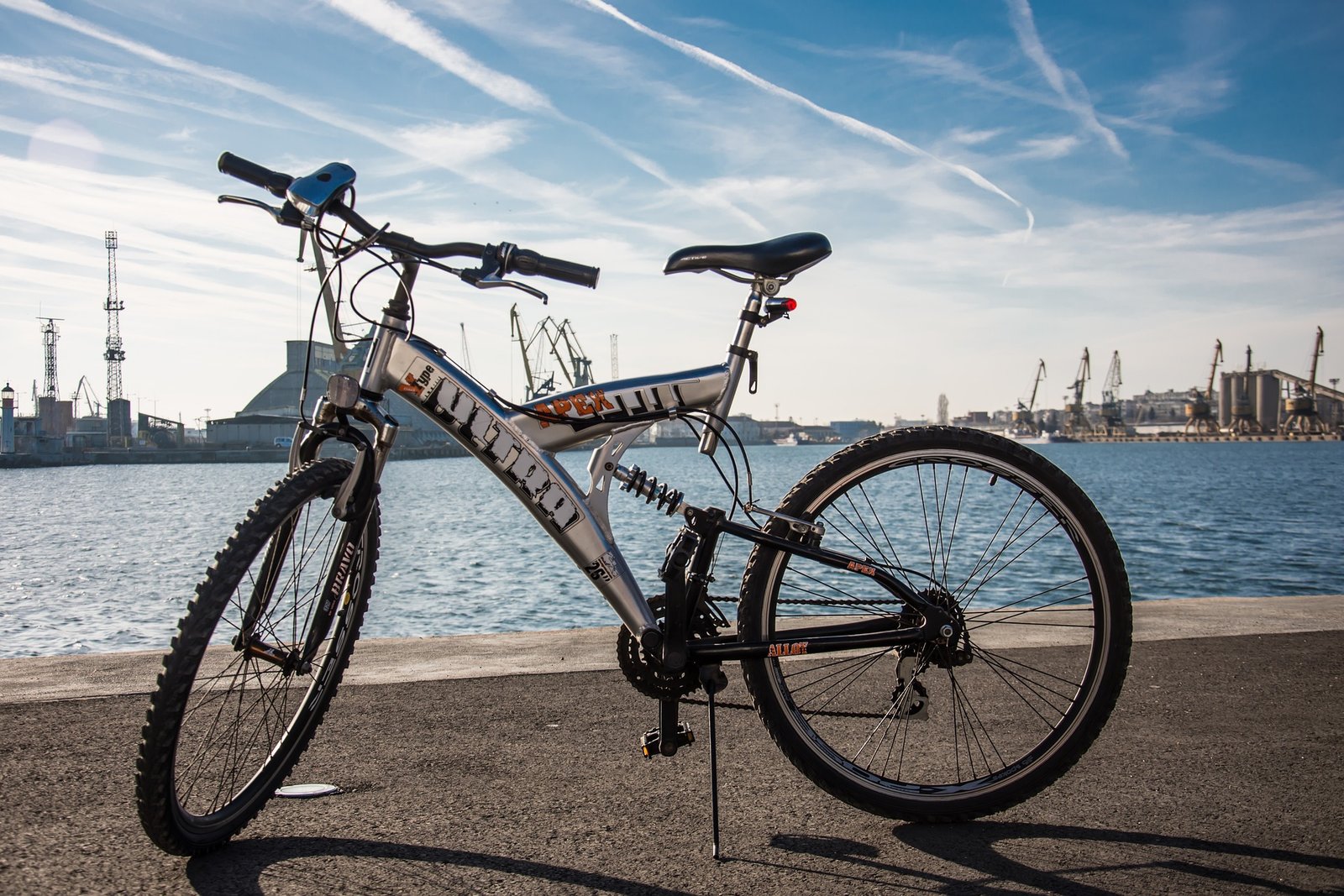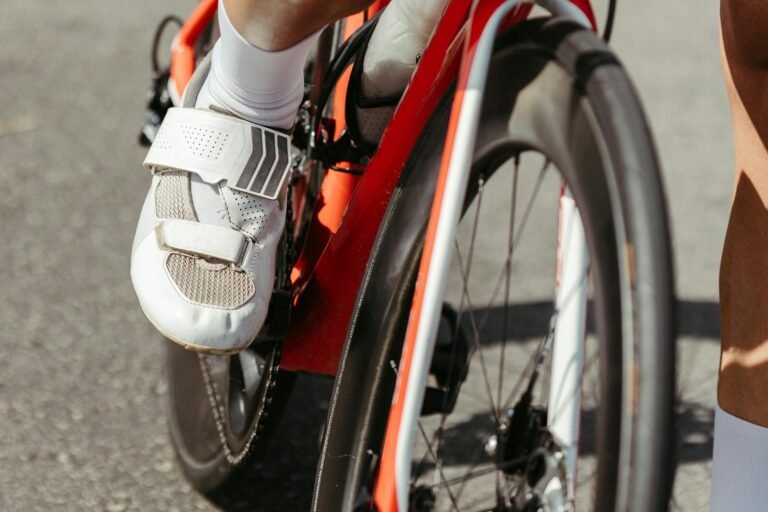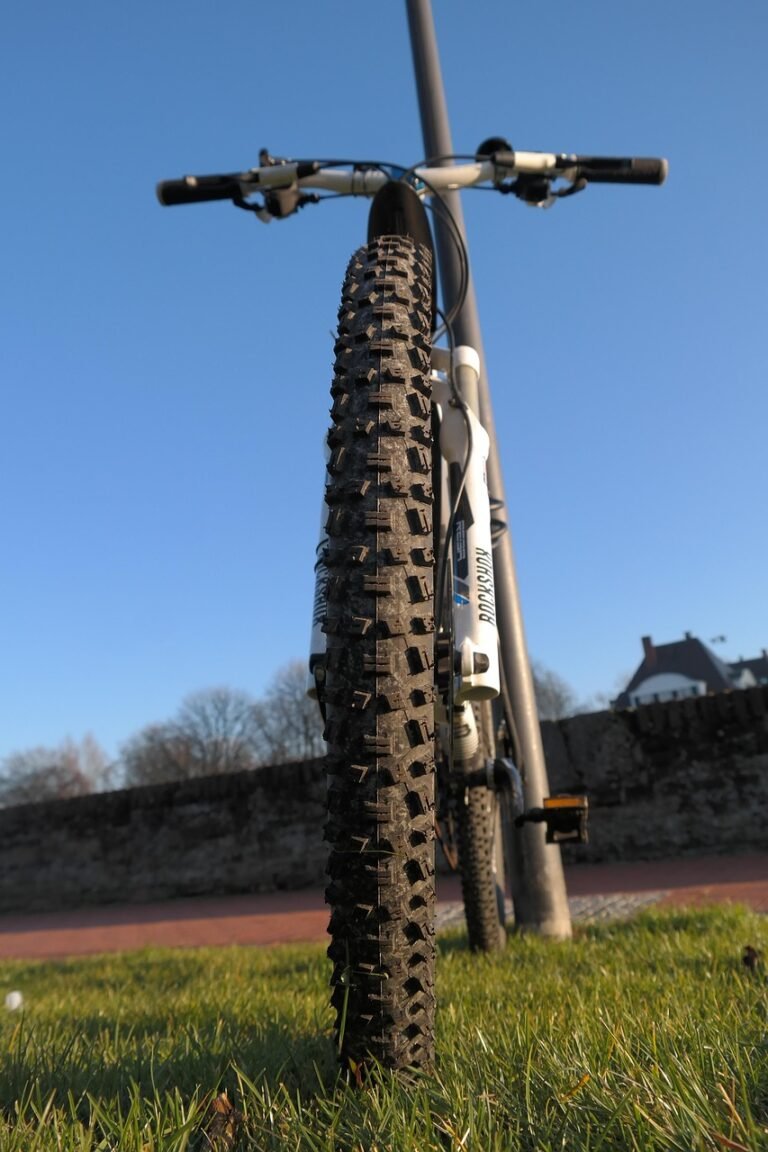Best Mountain Bikes of 2024: Top Picks for Every Terrain
Finding the best mountain bikes can be a difficult task. Whether you’re a seasoned cyclist or a beginner eager to explore the great outdoors, selecting the right mountain bike is crucial for an enjoyable ride.
With so many options on the market, how do you choose? I’ve done the research to bring you the top mountain bikes of 2024. From lightweight frames to durable suspension systems, this guide will help you find the bike that suits your style, budget, and terrain. Let’s gear up and jump in!
What to Look for in a Mountain Bike
Buying a mountain bike can feel overwhelming with so many features and options. The key is understanding the essential components, choosing the right type of bike, and matching it to your preferred terrain. Let’s break it down to help you find the perfect ride.

Key Features to Consider
- Frame Material
The frame is the backbone of any bike. Aluminum is a popular choice for its balance of strength, weight, and affordability, while carbon fiber offers unmatched lightness and stiffness—great for competitive riders but pricier. Steel frames, though heavier, are incredibly durable and absorb vibrations, making them excellent for rugged trails. - Suspension Type
Suspension determines how well your bike handles bumps and rough terrain. Hardtails (front suspension only) are simpler, lighter, and often more affordable, ideal for cross-country and smoother trails. Full suspension (front and rear suspension) offers better shock absorption and traction, making it the go-to choice for downhill and technical terrains. - Wheel Size
Mountain bikes typically come with 27.5-inch or 29-inch wheels.- 27.5-inch wheels are nimble and accelerate quickly, perfect for twisty trails.
- 29-inch wheels offer better stability and roll over obstacles more easily, ideal for long-distance or rugged trails.
Tire width also matters—wider tires provide more grip, while narrower ones reduce rolling resistance.
Types of Mountain Bikes
Hardtails
Hardtail bikes have front suspension only. They are lighter, more affordable, and easier to maintain, making them a great choice for beginners or those focused on cross-country rides.
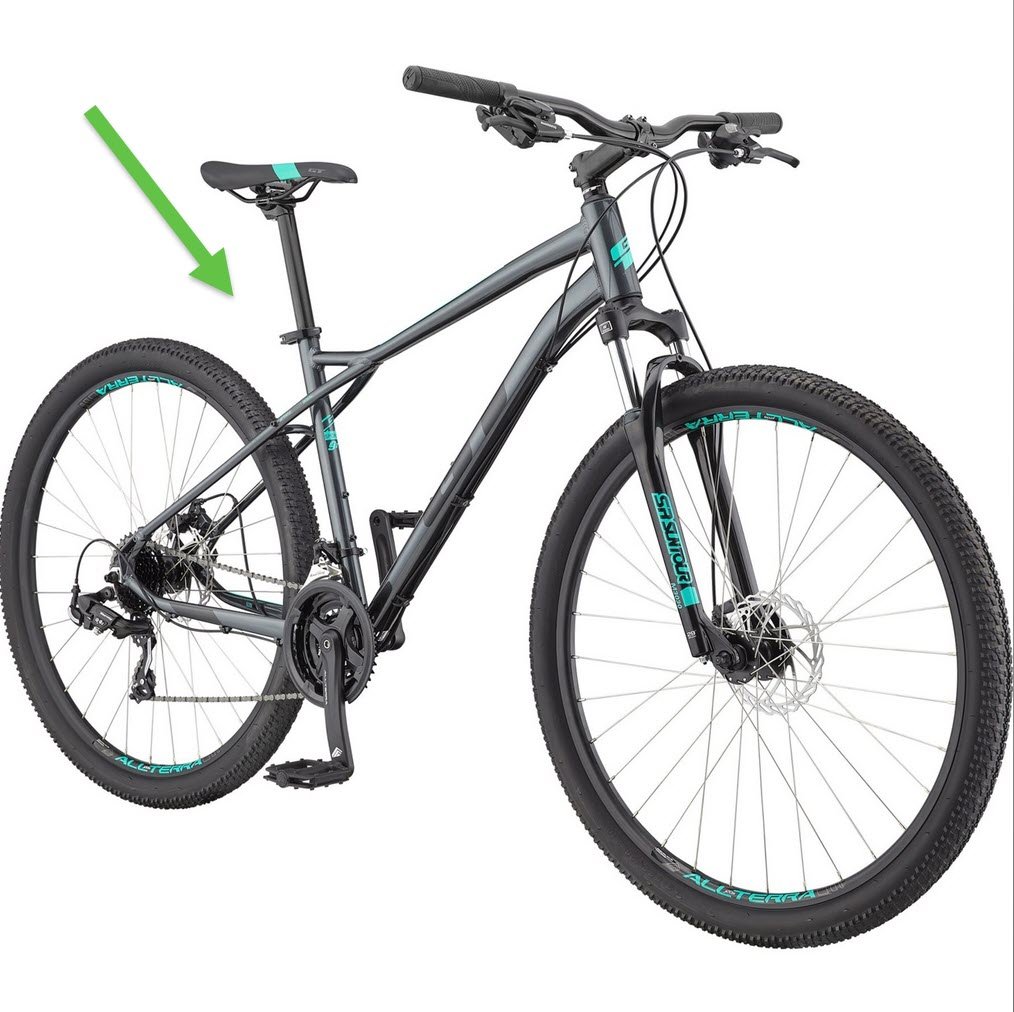

Full Suspension
These bikes have both front and rear suspension, offering a smoother ride on rough terrain. While they’re heavier and often more expensive, they excel in downhill riding, technical trails, and enduro racing.
Matching Your Bike to the Terrain
- Cross-Country (XC)
Cross-country bikes are designed for speed and efficiency on smoother trails and long distances. They’re often lightweight, with a steeper geometry for climbing and narrow tires for lower rolling resistance. - Trail
Trail bikes are versatile all-rounders. With a relaxed geometry, 120-140mm of suspension travel, and wider tires, they handle everything from moderate climbs to technical descents with ease. - Downhill (DH)
Downhill bikes are purpose-built for steep, technical descents. They feature heavy-duty frames, 200mm of suspension travel, and slack geometry for stability at high speeds. These bikes are less practical for climbing but perfect for lift-assisted bike parks.
Top Mountain Bikes for Beginners
Starting your mountain biking journey is exciting, and finding the right bike is crucial. You don’t need to spend a fortune to get a solid ride—there are plenty of great options for under $1,000 that are lightweight, durable, and comfortable for beginners.
Let’s take a look at two excellent choices: the Trek Marlin 7 and the Specialized Rockhopper Comp 29.
Budget-Friendly Options Under $1,000
Trek Marlin 7
The Trek Marlin 7 is one of the best entry-level bikes you can get for around $700. It comes with a lightweight aluminum frame, a 2×9 drivetrain for smooth gear shifts, and a front suspension fork with 100mm of travel. This bike is great for beginners who want to tackle cross-country trails or even light mountain trails. The wide-range gearing and hydraulic disc brakes ensure you can handle a variety of terrain with ease. It’s comfortable and versatile, making it perfect for those starting out but wanting a bike that can grow with them.
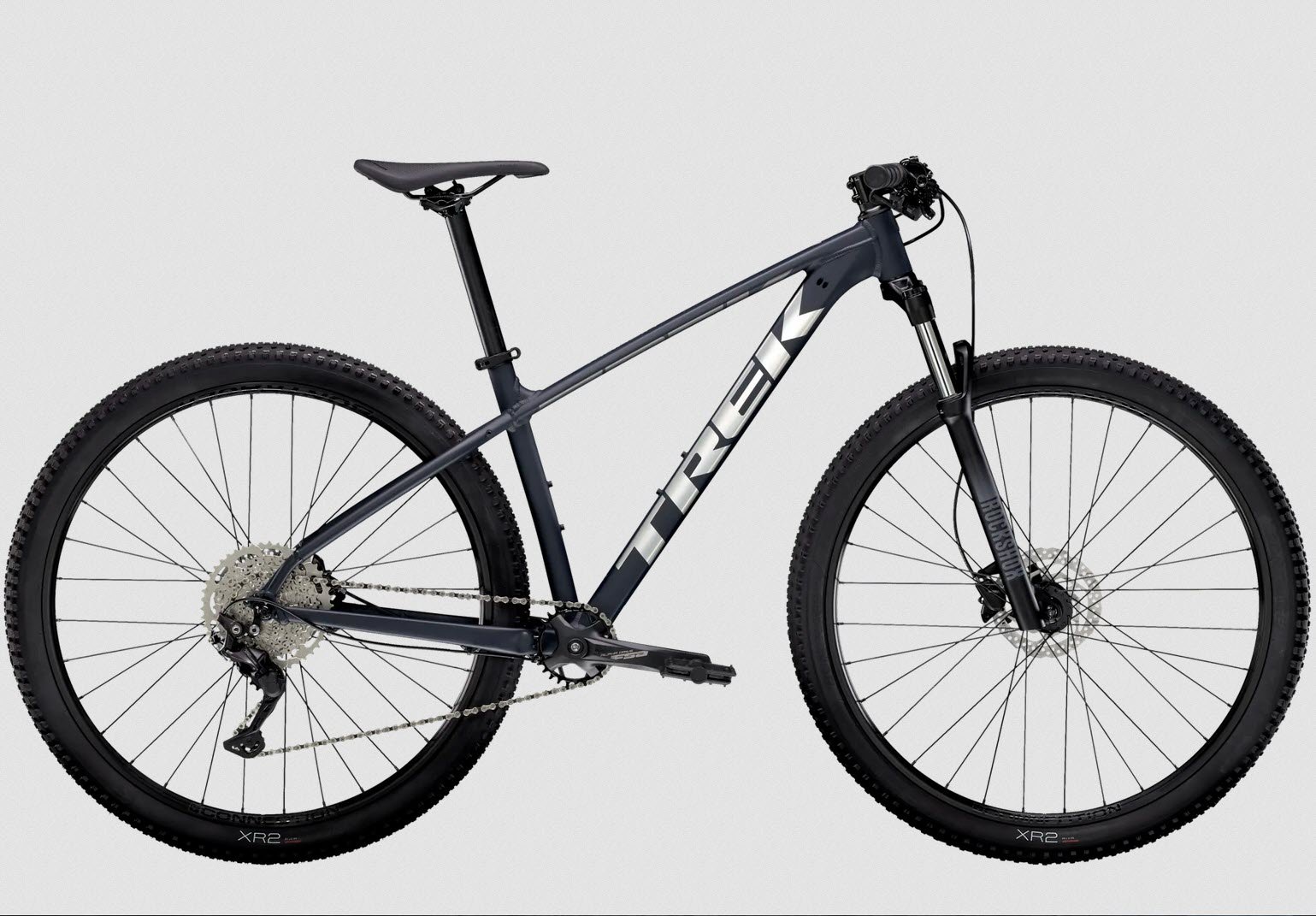
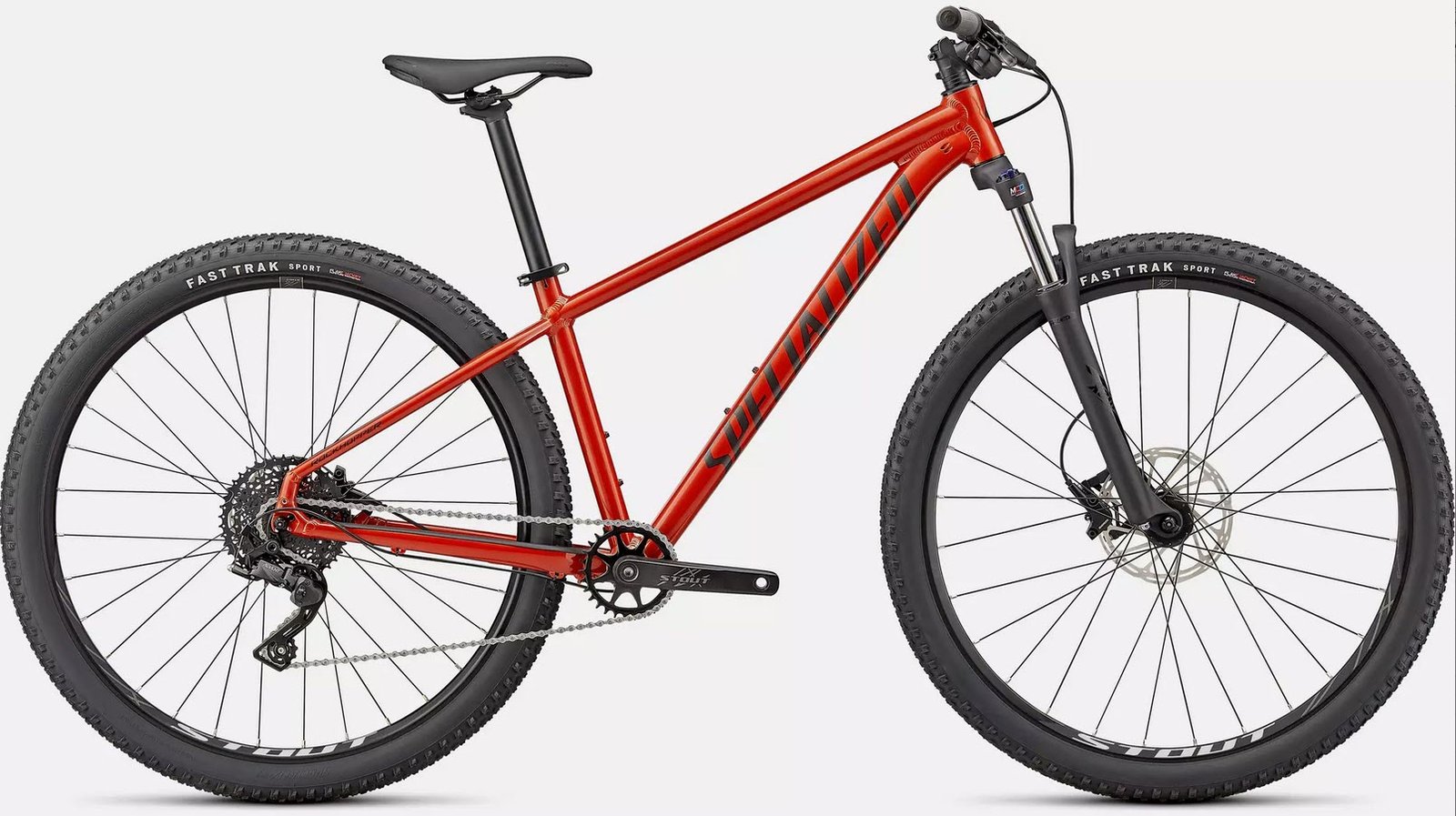
Specialized Rockhopper Comp 29
For around $950, the Specialized Rockhopper Comp 29 offers great value for beginner riders looking for something with a bit more durability and performance. It’s designed for rougher trails, with a strong but lightweight frame and 29-inch wheels that offer excellent rollover ability. The Rockhopper Comp also has a 1x drivetrain, which simplifies shifting, and an SR Suntour fork with 80mm of travel, ideal for absorbing bumps on uneven terrain. While it lacks some of the premium features of high-end bikes, it provides everything a beginner needs at a solid price point.
Lightweight Frames for Easy Handling
Both the Trek Marlin 7 and Specialized Rockhopper Comp 29 use lightweight aluminum frames that make them easier to handle, especially when you’re still getting the hang of controlling your bike on varied terrain. The aluminum frame is durable yet not too heavy, and it’s perfect for first-time riders. These bikes are designed to be nimble, making your learning experience smoother as you gain confidence.
Essential Accessories for First-Time Riders
When you’re new to mountain biking, a few key accessories can make your rides more enjoyable and safer:

- Helmet
A high-quality helmet is non-negotiable. Make sure it fits well and has proper ventilation. Popular brands like Giro and Bell offer budget-friendly options that will protect you without compromising comfort. Check out my article on the topic. - Gloves
Mountain biking gloves provide grip and protection, especially when riding over rough or rocky terrain. Look for padded gloves that also offer good breathability. - Water Bottle and Cage
Staying hydrated is key when you’re out on the trails, so look for a water bottle cage that fits onto your bike’s frame. Many beginner bikes, like the Trek Marlin 7, already come with mounts for bottle cages. - Flat Pedals
Most beginner bikes, including the Specialized Rockhopper Comp 29, come with flat pedals, which are easier to use compared to clipless pedals. You can always upgrade to clipless pedals once you’ve gained more confidence.
Both the Trek Marlin 7 and Specialized Rockhopper Comp 29 are excellent choices for first-time mountain bikers. At just under $1,000, they offer a perfect balance of lightweight frames, durability, and comfort for beginners.
Whether you’re interested in cross-country trails or more technical terrain, either of these bikes will help you build confidence and enjoy your rides. Don’t forget to pick up your essential gear like a helmet and gloves to keep you safe and comfortable on your adventures!
Mountain Bikes for Different Terrains
Mountain biking is all about adventure, and having the right bike for the terrain you’ll be riding on can make a huge difference. Whether you’re navigating rocky trails, riding through sand or snow, or looking for a versatile bike for different surfaces, there’s a mountain bike designed to handle it. Let’s explore the best bikes for different terrains to help you choose the one that best suits your needs.
Best Bikes for Rocky Trails
Rocky trails can be challenging, with loose gravel, sharp rocks, and uneven surfaces. To handle this, you need a mountain bike with strong suspension, excellent traction, and a durable frame.

Specialized Stumpjumper
One of the top choices for rocky terrain is the Specialized Stumpjumper. $9000 Known for its full suspension, this bike absorbs shock efficiently, allowing for smooth rides over tough, rocky paths. Its frame is designed for rugged conditions, and its geometry provides stability, so you’ll feel more in control on uneven surfaces. The 29-inch wheels help roll over obstacles with ease, making it a perfect choice for aggressive trail riders.
Options for Sand, Mud, and Snow Riding
Riding in extreme conditions like sand, mud, or snow requires a bike designed to handle soft and loose surfaces. These bikes need wide tires, robust frames, and extra suspension to provide the necessary support.
- Fat Bikes (Surly Ice Cream Truck)
For snow or sand riding, fat bikes are the go-to option. These bikes feature extra-wide tires (often 3.7 inches or more) that help you maintain traction on loose surfaces. The Surly Ice Cream Truck, $2349 for example, is a fat bike that’s designed specifically for snow and sand, offering a smooth and stable ride even in challenging conditions. The 4.8-inch tires help to float over soft surfaces, while the wide frame allows for more stability when turning or braking on tricky terrain. - Salsa Beargrease
Another excellent fat bike for mud, sand, and snow is the Salsa Beargrease. $2899 This lightweight fat bike has a carbon frame that makes it faster and more efficient than traditional fat bikes. Its large 27.5-inch wheels with wide 3.8-inch tires are perfect for traversing soft, unstable surfaces. It’s a versatile fat bike with an excellent gear range, making it a great choice for off-season or adventure riding.
Hybrid Mountain Bikes for Versatile Performance
Hybrid mountain bikes combine the durability and suspension of a mountain bike with the lighter, smoother ride of a road bike. These bikes are perfect for those who want versatility, allowing them to handle both rugged trails and city streets without switching bikes.
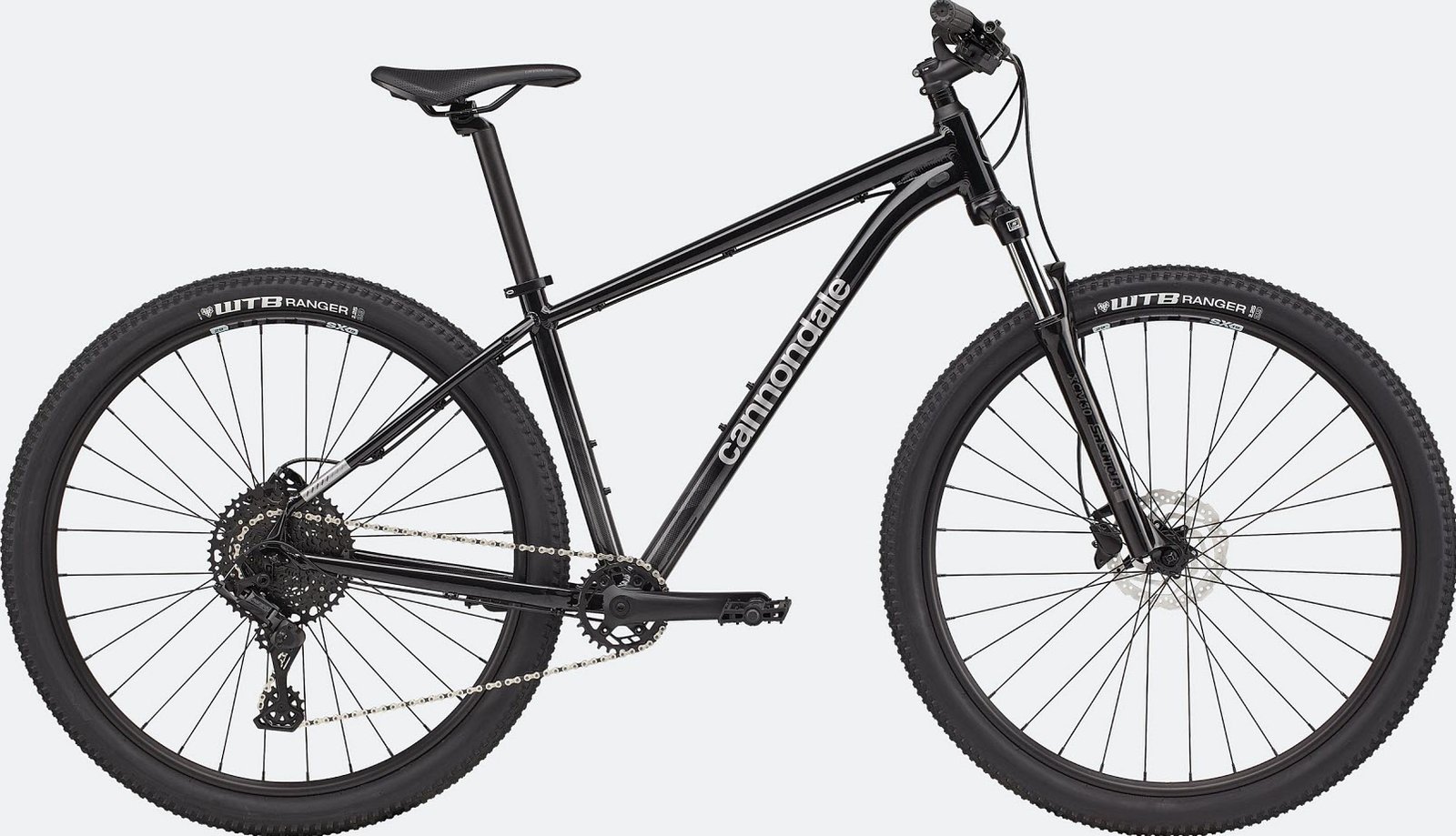
Cannondale Trail 5
The Cannondale Trail 5 is a great hybrid mountain bike that’s designed for all-around use. $540 It offers front suspension, a lightweight aluminum frame, and 27.5-inch wheels, which help it perform well on moderate trails while still providing a comfortable ride on paved surfaces. This bike is perfect for someone who wants to ride both on and off the road without buying two separate bikes.
GT Aggressor Pro
The GT Aggressor Pro is another excellent hybrid option. $300 IMO worth $500. This bike comes with 29-inch wheels, which provide better stability and smooth rolling over both trails and roads. Its 120mm front suspension and aluminum frame make it easy to handle, whether you’re climbing a steep hill or cruising down a paved path. It’s a versatile choice for those who like to switch between different types of terrain without sacrificing performance.
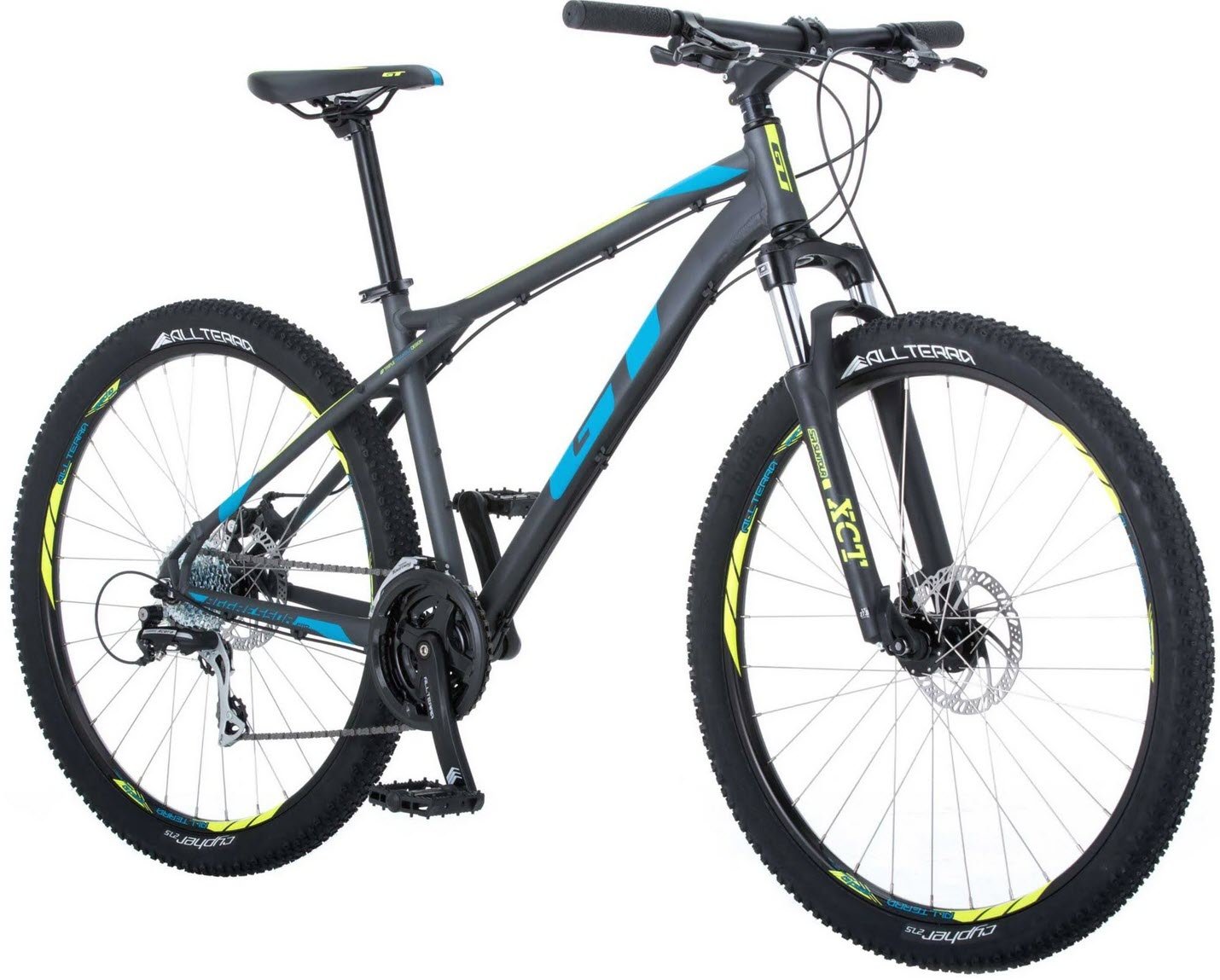
Choosing the right bike for your terrain is key to having a smooth, enjoyable ride. For rocky trails, a full-suspension bike like the Specialized Stumpjumper or Trek Fuel EX 8 is a great choice. If you’re riding in sand, snow, or mud, consider a fat bike like the Surly Ice Cream Truck or Salsa Beargrease for extra stability. And for those who want a versatile bike for both trails and urban environments, hybrid options like the Cannondale Trail 5 or GT Aggressor Pro will provide the perfect blend of performance and comfort.
No matter which terrain you’re tackling, always consider the specific features of your bike, such as suspension, tire size, and frame material, to make sure it meets your riding needs.
Maintenance Tips for Mountain Bikes
Keeping your mountain bike in tip-top shape doesn’t have to be complicated. Regular maintenance ensures your bike performs well, lasts longer, and keeps you safe on the trails. Here are some basic tips to help you maintain your ride.
How to Clean and Lubricate Your Bike
Cleaning your bike regularly is essential to prevent dirt and grime from building up, which can cause damage over time. After every ride, especially on muddy trails, give your bike a quick rinse with water. Avoid using high-pressure washers, as they can force water into sensitive areas like the bearings and suspension.
Once clean, dry your bike with a soft cloth. Lubricate the chain with a dedicated bike chain lube to ensure smooth shifting and to reduce wear. For the best results, apply the lube to the inside of the chain, then wipe off any excess with a rag to prevent dirt from sticking.
Pro Tips for Extending the Lifespan of Your Mountain Bike
- Store It Properly
Avoid leaving your bike exposed to the elements. Store it in a dry place, ideally indoors, to prevent rust and deterioration of components. - Inspect Regularly
Make it a habit to check your bike for loose bolts, frayed cables, or cracks in the frame. Early detection of issues can prevent more expensive repairs later. - Service It Often
If you’re not comfortable with more complex maintenance, take your bike to a professional for a tune-up every season. Regular servicing ensures your bike stays in top condition for the long haul.
By following these simple tips, you can keep your mountain bike running smoothly, ensuring it’s ready for your next adventure!
Where to Buy the Best Mountain Bikes in 2024
When it comes to buying a mountain bike, you have two primary options: purchasing online or visiting a local store. Both come with their own sets of pros and cons, and the right choice for you largely depends on what you’re looking for in terms of selection, convenience, and customer service.
Online vs. In-Store: Pros and Cons
In-Store Shopping
Pros
In-Store Shopping
Cons
Online Shopping
Pros
Online Shopping
Cons
Recommended Retailers and Deals to Watch Out For
- REI: Known for high-quality bikes and excellent customer service, REI frequently offers sales and discounts on mountain bikes, especially during the end-of-season clearance. They also have a great return policy, which gives you peace of mind.
- Trek Bicycle Stores: Trek’s website and their physical stores are both excellent for browsing a range of mountain bikes. They also offer deals, especially during seasonal sales like Black Friday or springtime events. Buying directly from Trek ensures you’re getting a well-built bike with customer service support.
- BikesOnline: A favorite among online shoppers, BikesOnline often runs promotions and provides a wide variety of mountain bikes, from entry-level to high-end models. Their fast shipping and free returns are appealing.
- Jenson USA: Known for its budget-friendly options and good customer service, Jenson USA offers frequent discounts on bikes and accessories. Keep an eye on their “deal of the day” for major savings.
Customizing Your Mountain Bike with Upgrades
Once you’ve got your bike, many riders choose to customize or upgrade it to better suit their needs. Some popular upgrades include:
- Upgrading the Suspension: If you’re tackling more technical trails, upgrading to a higher-quality fork or rear shock can drastically improve your ride. Fox Racing Shox and RockShox are top brands known for high-performance suspension systems.
- Changing the Tires: Tires can significantly affect the performance of your bike. If you’re switching from cross-country to more rugged terrain, consider wider tires with more aggressive tread patterns. Maxxis and Schwalbe offer excellent mountain bike tires.
- Drivetrain Upgrades: A more advanced drivetrain will make shifting smoother and more precise. Consider upgrading to a Shimano XT or SRAM Eagle system for durability and improved performance on steep climbs or technical descents.
Upgrading your bike allows you to fine-tune it to your riding style and terrain, ensuring you get the best possible performance. Just be sure to consult with a local shop or do thorough research to ensure your upgrades are compatible with your bike.
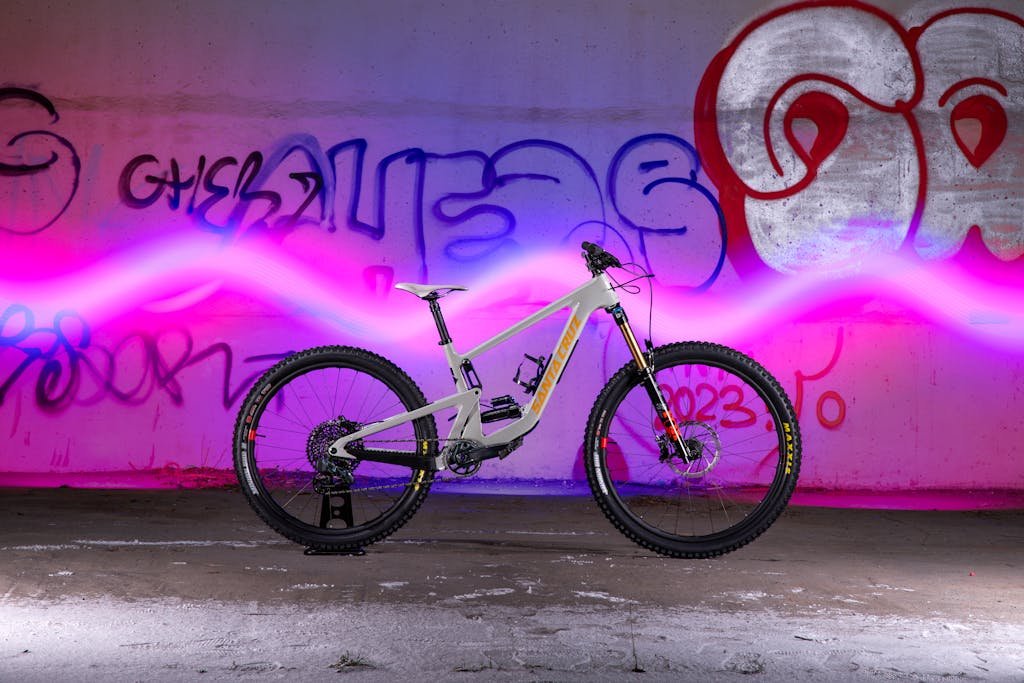
Wrapping Up
Whether you choose to shop online or in person, both options have their benefits. Retailers like REI and BikesOnline offer excellent deals online, while local stores provide a more personalized, hands-on experience. Whichever route you choose, don’t forget that customizing your bike with the right upgrades can enhance your riding experience for years to come.
Choosing the best mountain bike doesn’t have to be overwhelming. By considering your riding style, terrain, and budget, you can find a bike that delivers both performance and fun. Whether you’re tackling challenging trails or enjoying a leisurely ride, the right bike makes all the difference. Ready to ride? Check out our top picks and start your adventure today!
Engage, Endure and Enjoy!
Find More Resources on Bicycles
- Smart Bike Trainers: 2024 Best Picks with Features and Benefits
- Mountain Biking for Beginners: Essential Guide to Hit the Trails in 2024
- 3 Best Mountain Bikes of 2024: Complete Buyer’s Guide & Reviews
- How Do You Adjust Bike Brakes? A Step-by-Step Guide for 2024
- Essential Mountain Bike Gear: A Complete Guide for 2024

